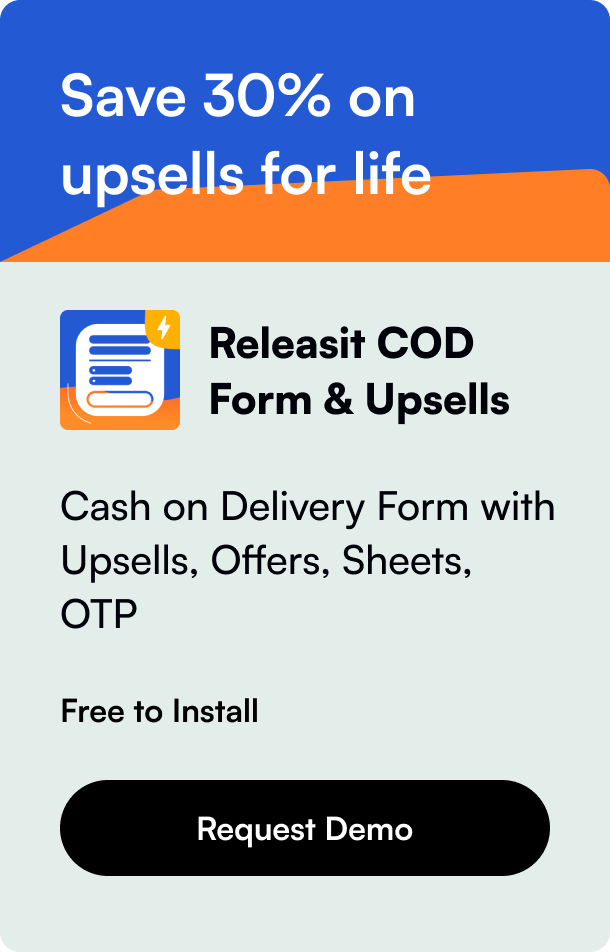Table of Contents
- Introduction
- Understanding Chargebacks on Shopify
- Best Practices for Managing Chargebacks
- Conclusion
- FAQ
Introduction
Have you ever awakened to find an unexpected chargeback notification from your Shopify store? This moment can spark a whirlwind of emotions: confusion, frustration, and maybe even fear about the impending impact on your business. Chargebacks--a term that can send shivers down the spine of any online merchant--are a complex part of managing an online store that can significantly affect your operations and revenue. Yet, with the right information and strategies, you can navigate through them with confidence. This article aims to demystify the process surrounding chargebacks on Shopify, explore how many you are allowed, and share best practices to help manage, if not reduce, their occurrences.
Chargebacks occur when a customer disputes a transaction with their credit card issuer, asking to reverse the charge. For Shopify merchants, understanding the ins and outs of these disputes is critical for maintaining a healthy, thriving online store. In this exploration, we'll delve deep into the policies governing chargebacks, strategies for effective handling, and proactive measures to minimize their occurrences.
Understanding Chargebacks on Shopify
At its core, a chargeback is a protection mechanism for consumers, designed to safeguard against unauthorized or fraudulent transactions. However, this customer-centric measure can sometimes be exploited, leaving merchants to navigate the repercussions.
Shopify, recognizing the importance of this issue, provides a robust framework for dealing with chargebacks and inquiries. Despite the platform's efforts to streamline the process, the ultimate decision in a chargeback case rests with the customer's issuing bank. This reality underscores the need for merchants to adopt comprehensive strategies for dealing with disputes effectively.
The Process Unveiled
When a chargeback is filed against your Shopify store, the amount in question is immediately deducted from your account, along with a chargeback fee. This initiates a formal dispute process, where you, the merchant, have the opportunity to present evidence defending the legitimacy of the charge. The outcome of this process will determine whether the disputed funds are returned to you or the customer.
Limitations and Penalties
While Shopify does not explicitly limit the number of chargebacks you can receive, a high frequency of disputes can have severe ramifications. Excessive chargebacks could result in higher processing fees, holds on your account, or in extreme cases, the termination of your Shopify Payments account. Monitoring your chargeback ratio - chargebacks received divided by the total number of transactions - is therefore crucial. Keeping this ratio low is a key goal for any merchant aiming to maintain a healthy relationship with payment processors and platforms like Shopify.
Best Practices for Managing Chargebacks
Avoiding chargebacks begins with understanding their common causes, such as customer dissatisfaction, unauthorized transactions, or unrecognizable charges. Here are strategies to help you minimize these instances:
Clear Communication
- Transparent Policies: Ensure your return and refund policies are clear and visible on your website.
- Detailed Product Descriptions: Provide accurate, detailed descriptions and images to set the right expectations.
- Prompt Customer Service: Address customer concerns quickly and efficiently to prevent disputes from escalating to chargebacks.
Fraud Prevention
- Utilize Shopify's Fraud Analysis: Leverage Shopify’s built-in tools to assess the risk level of transactions.
- Verification Processes: Implement additional verification for orders flagged as high risk, such as AVS (Address Verification Service) and CVV checks.
Record Keeping
- Meticulous Documentation: Maintain detailed records of customer interactions, purchase confirmations, and shipping information to use as evidence in dispute resolutions.
Chargeback Response
- Quick and Thoughtful Rebuttal: Respond to chargebacks promptly with a well-prepared rebuttal that includes all relevant evidence supporting your case.
Educate Your Customers
- Clarify Billing Statements: Ensure that your store name is clearly recognizable on billing statements to avoid confusion and unrecognized charge disputes.
Conclusion
Chargebacks, while challenging, are an integral part of doing business online. By understanding Shopify’s framework, keeping a keen eye on your transactions, and implementing the best practices outlined above, you can significantly reduce the incidence and impact of chargebacks on your store. Remember, proactive management, clear communication, and exceptional customer service are your best allies in navigating through the choppy waters of chargebacks.
FAQ
-
What triggers a chargeback on Shopify?
- Chargebacks can be triggered by customer disputes for various reasons, including unauthorized transactions, not receiving an item, receiving a damaged or different item, or not recognizing a charge on their statement.
-
How can I prevent chargebacks on my Shopify store?
- Implementing preventive measures such as clear policies, fraud prevention tools, accurate product descriptions, and excellent customer service can significantly decrease the likelihood of chargebacks.
-
What should I do if I receive a chargeback notice?
- Respond promptly with a well-organized rebuttal that includes all pertinent information and evidence to support your case against the chargeback.
-
Can too many chargebacks shut down my Shopify Payments account?
- Yes, an excessively high chargeback ratio can lead to penalties, including the potential termination of your Shopify Payments account, emphasizing the importance of chargeback management.
-
Is it possible to win a chargeback dispute?
- Yes, by presenting compelling evidence that the transaction was legitimate and that you fulfilled your obligations as a merchant, you can win a chargeback dispute.








